UPSC Daily Current Affairs - 5th July 2024 | Current Affairs & Hindu Analysis: Daily, Weekly & Monthly PDF Download
GS2/International Relations
What a Labour election win could mean for India-UK Free Trade Agreement (FTA)?
Source: Mint
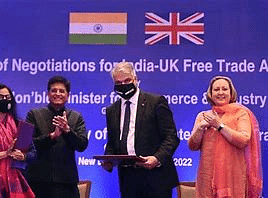
Why in news?
New Delhi and London have been engaged in negotiations for over two years to discuss a proposed free trade agreement (FTA) aimed at enhancing bilateral trade between the two nations.
What does the agreement could result?
- Mutual Tariff Reductions: Both countries may agree to lower tariffs on a wide range of goods, including automobiles, textiles, alcoholic beverages, and medical instruments, facilitating increased trade flows.
- Market Access:Improved market access could benefit industries in both countries, particularly India's IT and services sectors, which are seeking expanded opportunities in the UK market.
- Economic Growth:The FTA aims to stimulate economic growth by promoting trade and investment, potentially boosting employment and productivity in relevant sectors.
- Political Relations:Strengthening economic ties could lead to closer political cooperation between India and the UK, influencing bilateral relations on international platforms.
Impact on Global Geopolitics and Indian Scenario
- Global Trade Alliances:Strengthening economic ties between India and the UK could enhance their geopolitical influence, potentially shaping global trade alliances and partnerships in the Asia-Pacific region and beyond.
- Diversification of Trade Partnerships:For India, the FTA represents a strategic move to diversify its trade partnerships beyond traditional allies, thereby reducing dependency and enhancing economic resilience.
- Improve Bilateral Relations:Improved economic cooperation could foster closer political relations between India and the UK, influencing diplomatic engagements and collaboration on global issues such as climate change and security.
- Regional Economic Impact: The agreement may spur economic growth in India, particularly benefiting sectors like IT and services, while also contributing to the UK's post-Brexit economic strategy and trade diversification efforts.
- Influence the Environmental and Regulatory Standards:Negotiations over environmental standards, including India's concerns over carbon taxes and the UK's climate goals, highlight the FTA's potential to influence global environmental policies and regulatory frameworks.
India-UK Relation
- Strong historical ties: India and the UK share deep historical and cultural connections dating back to the colonial era. The UK has a large Indian diaspora of over 1.5 million people.
- Strategic partnership:In 2004, India and the UK upgraded their relationship to a Strategic Partnership. This was further strengthened by the '2030 Roadmap for India-UK Future Relations' agreed in 2021, which outlined cooperation across 5 pillars- people-to-people ties, trade, defence and security, climate change, and health.
- Growing trade and investment:The UK is one of India's major trading partners. Bilateral trade reached £38.1bn in the year to Q3 2023, making India the UK's 12th largest trading partner. India is the 3rd largest foreign investor in the UK. Both countries are negotiating an India-UK Free Trade Agreement to further boost economic ties.
- Cooperation in new frontiers:India and the UK are collaborating in emerging areas like fintech, green finance, cyber security, and critical technologies. They plan to hold the first Strategic Tech Dialogue to deepen cooperation in areas like semiconductors, 5G, and AI.
- Shared global outlook:India and the UK have convergent views on many global issues and support a rules-based international order. The UK supports India's permanent membership of the UN Security Council. They also cooperate closely on maritime security in the Indo-Pacific
Way forward:
- Addressing Key Negotiation Points:Focus on resolving critical issues such as tariff reductions, market access for IT and services sectors, and alignment on environmental standards to expedite FTA conclusion.
- Enhancing Strategic Partnerships:Strengthen bilateral economic and political cooperation through sustained dialogue and proactive engagement, aiming to maximize mutual benefits and ensure the long-term sustainability of the FTA.
Mains PYQ:The judicial systems in India and the UK seem to be converging as well as diverging in recent times. Highlight the key points of convergence and divergence between the two nations in terms of their judicial practices.
(UPSC IAS/2020)
GS2/International Relations
EAM Jaishankar attends Shanghai Cooperation Organisation Summit
Source: Mint

Why in news?
Indian External Affairs Minister S Jaishankar participated in the Shanghai Cooperation Organisation (SCO) Summit in Kazakhstan’s capital Astana. On the sidelines of this summit, he held talks with Chinese Foreign Minister Wang Yi. He also held bilateral meetings with his counterparts from SCO members Tajikistan and Russia, and the newest member Belarus, on the sidelines of the summit.
About
- SCO is a permanent intergovernmental international organisation, created in June 2001 in Shanghai (China).
- Founding members included Kazakhstan, China, Kyrgyzstan, Russia, Tajikistan.
- The five countries had come together to work on regional security, reduction of border troops, and terrorism in the post-Soviet era in 1996.
- In 2001, the Shanghai Five inducted Uzbekistan into the group and named it the SCO outlining its principles in a charter that promoted what was called the Shanghai spirit of cooperation.
- This organization represents approximately 42% of the world’s population, 22% of its land area and 20% of its GDP.
- Official working languages: Chinese, Russian.
- SCO Secretariat: Beijing, China.
Members, Observers and dialogue partners
- 10 member states – China, Kazakhstan, Kyrgyzstan, Russia, Tajikistan, Uzbekistan, India, Pakistan, Iran and Belarus.
- India and Pakistan became full members at the Heads of State Council meet in Astana in 2017.
- Iran became the 9th member of the SCO in 2023 under the chairmanship of India.
- During this year’s summit (in 2024), Belarus became the 10th member of the organization.
- 2 Observer members – Afghanistan, Mongolia.
- 9 Dialogue Partners – Azerbaijan, Armenia, Egypt, Cambodia, Qatar, Nepal, Saudi Arabia, Turkey, and Sri Lanka.
Organisational Structure of SCO
- (HSC) is the supreme decision-making body in the SCO, it meets once a year.
- Council of Heads of Government is the second-highest council in the organisation.
- Council of Foreign Ministers hold regular meetings, where they discuss the current international situation.
- Regional Anti-Terrorist Structure (RATS), based in Tashkent, is established to combat terrorism, separatism and extremism.
India’s association with SCO
- India joined the SCO in 2005 as an observer country and became a full member of the group at the Astana Summit in 2017.
- India created five new pillars and focus areas of cooperation in SCO -- Startups and Innovation, Traditional Medicine, Digital Inclusion, Youth Empowerment and Shared Buddhist Heritage.
- Two new mechanisms in SCO -- Special Working Group on Startups and Innovation and Experts Working Group on Traditional Medicine -- were created at India's initiative.
- Kashi/Varanasi was celebrated as the 1st SCO Tourist and Cultural Capital of SCO 2022-23.
SCO Membership and India
- SCO membership allows India to cooperate more with Central Asian countries and address common security issues, despite historically weak relations since 1991.
- The Regional Anti-Terrorist Structure (RATS) is a key SCO component, aiding in counter-terrorism exercises, intelligence analysis, and sharing information on terrorist movements and drug trafficking.
Challenges and Criticisms
- The effectiveness of the SCO is questioned due to tensions among its members. India currently has strained relations with China and Pakistan.
- Competition between Russia and China for influence, especially in Central Asia, poses challenges for the organization's unity.
- SCO's broad language enables countries to nominally support initiatives while prioritizing their own interests when conflicts arise.
GS3/Economy
Replacing the Wholesale Price Index (WPI) with a Producer Price Index (PPI)
Source: Business Standard

Why in news?
The Department for Promotion of Industry and Internal Trade (DPIIT) is close to finalising a model to launch a Producer Price Index (PPI) in India that may eventually replace the Wholesale Price Index (WPI).
- The government has been trying to determine the methodology for constructing a PPI in the Indian context for over two decades, the biggest challenge being finalising one that would make an improvement to the existing WPI.
Definition:
- WPI represents the price of goods at a wholesale stage - goods that are sold in bulk and traded between organisations instead of consumers, and is used as a measure of inflation in some economies.
How is it calculated?
- WPIs are reported monthly in order to show the average price changes of goods.
- The total costs of the goods being considered in one year are then compared with the total costs of goods in the base year. The total prices for the base year are equal to 100 on the scale. Prices from another year are compared to that total and expressed as a percentage of change.
WPI in India:
- It is used as an important measure of inflation in India and takes into account the change in price of goods only.
- WPI data is published by the Office of Economic Adviser, Ministry of Commerce and Industry, Government of India.
- The current series of WPI - with base year of 2011-12 - was the seventh revision of WPI and implemented from 2017 onwards.
Major components of WPI:
- Primary articles, which is subdivided into Food Articles and Non-Food Articles (Oil Seeds, Minerals and Crude Petroleum).
- Fuel & Power, which tracks price movements in Petrol, Diesel and LPG.
- Manufactured goods comprise the biggest basket (Textiles, Apparels, Chemicals, Cement, Metals, Sugar and Tobacco Products, Vegetable and Animal Oils, etc).
WPI Food Index:
- It is a sub-index within WPI, and includes Food Articles from the Primary Articles basket and the food products from the Manufactured Products basket.
Significance of WPI:
- It is an easy and convenient method to calculate inflation and Fiscal and monetary policy changes are greatly influenced by changes in WPI.
Criticism of WPI:
- It does not account for inflation at the level of the ordinary public because they do not buy products at wholesale prices.
- Excludes the service sector, which covers about 55% of GDP.
- WPI has an inbuilt bias due to double counting of the same product and doesn't include exports and imports.
Challenges in Shifting from WPI to PPI:
- Likely to take more time: This is because the government would have to address the issues of -
- Preparing the right samples,
- Assigning the weighting, and
- Deciding on the periodicity (whether monthly or weekly) of the price collection.
- The biggest issue - To identify which services to include: What sort of services will serve as the correct representative of the sector?
- WPI is still the most widely followed measure of inflation: It is used as one of the deflators along with the Consumer Price Index (CPI) to calculate real GDP from nominal GDP.
- The government is separately working towards changing the current base year of 2011-12 for WPI.
GS3/Environment
Afforestation in Delhi Ridge
Source: Times of India
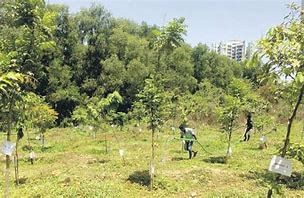
Why in news?
The Delhi High Court is set to physically inspect the Central and Southern parts of Delhi Ridge to assess the extent of afforestation and cutting of trees in the area.
Deforestation in Delhi Ridge:
- Over 308 hectares of the ecologically sensitive Delhi Ridge area has been encroached and another 183 hectares “diverted” for “non-forestry purposes.”
- ( Data by Central Empowered Committee (CEC) report to the Supreme Court, 2023.)
About Delhi Ridge
- Delhi Ridge is located in the National Capital Territory of Delhi, extending as a northern extension of the ancient Aravalli Range
- Composed primarily of quartzite rocks, it spans approximately 35 kilometres from Tughlaqabad in the southeast to Wazirabad in the north along the Yamuna River
Ecological Significance:
- It acts as the “green lungs” of Delhi, providing crucial ecological services such as carbon sequestration and habitat for wildlife.
- Protects Delhi from the hot desert winds originating from Rajasthan to the west.
- It supports diverse flora and fauna, making Delhi one of the world’s most bird-rich capital cities.
- Efforts are ongoing to maintain biodiversity through biodiversity parks and wildlife sanctuaries like the Northern Ridge Biodiversity Park and Asola Bhatti Wildlife Sanctuary.
Geographical Features
- The ridge is believed to be over 1.5 billion years old, making it an ancient geological formation compared to the Himalayas (50 million years old).
- It functions as a watershed dividing the Indus Plain from the Gangetic Plain to the east within the Indo-Gangetic Plain.
Administrative Divisions:
- Divided into four main zones: Northern, Central, South-Central, and Southern Ridge.
- Each zone has distinct characteristics and faces varying degrees of urban encroachment and conservation efforts.
GS2/Governance
Issues with ‘mandir’ tag for Ayushman Health and Wellness Centres
Source: The Hindu
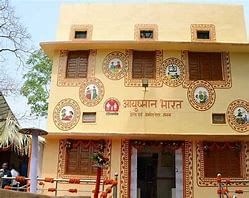
Why in news?
Following Mizoram and Nagaland, Meghalaya has also refused to rename its health and wellness centres as Ayushman Arogya Mandirs as per the Centre’s directive.
Context: Demographic composition of NE and its implications on policy decisions
- Christian Majority: About 75% of Meghalaya’s population practices Christianity, similar to the demographics of Mizoram (90%) and Nagaland (90%).
- State Asserts Autonomy: Meghalaya’s Health Minister emphasized that health being a State subject grants them the right to decide independently of the Centre’s advisory.
About Ayushman Bharat Health and Wellness Centres (AB-HWCs)
- AB-HWCs were launched to move away from selective health care to a more comprehensive range of services spanning preventive, promotive, curative, rehabilitative and palliative care for all ages.
- There are 1.6 lakh such centres across India under this initiative.
- National Health Policy of 2017 envisioned these centres as the foundation of India’s health system.
The Union Health Ministry renamed AB-HWCs as Ayushman Arogya Mandirs (AAM) with the tagline ‘Arogyam Parmam Dhanam’
- States and Union Territories were urged to complete the rebranding by the end of 2023.
Back2Basics: Ayushman Bharat – Pradhan Mantri Jan Arogya Yojana (PM-JAY)
- Details of PM-JAY: World’s largest fully government-funded health insurance scheme launched in 2018 providing Rs 5 lakh per family for secondary and tertiary care.
- Health Benefit Package: Covers the cost of surgery, medical and daycare treatments, medications, and diagnostics. Includes 3 days of pre-hospitalisation and 15 days of post-hospitalisation, including diagnostic care and expenses on medicines.
- No restriction on family size, age or gender. All pre-existing conditions are covered from day one.
- Beneficiaries: An entitlement-based scheme targeting beneficiaries identified by the latest Socio-Economic Caste Census (SECC) data.
Financing
- Jointly funded scheme: 60:40 between Centre and legislature for all States and UTs. 90:10 for North-Eastern States, J&K, Himachal Pradesh, and Uttarakhand. 100% central funding for Union Territories without legislature.
Nucleus Agency
- The National Health Authority (NHA) is an autonomous body under the Societies Registration Act, 1860, responsible for the effective implementation of PM-JAY.
State Health Agency (SHA)
- The apex body of the State Government responsible for implementing AB-PMJAY in the State.
GS3/Economy
Indian Government Bonds in JP Morgan index: how much funds could flow into India?
Source: Business Today
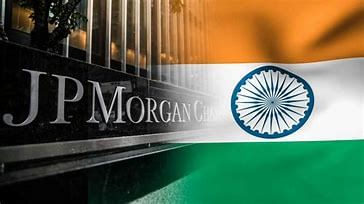
Why in news?
JP Morgan is including Indian Government Bonds in its emerging markets bond indices starting June 28. This move is expected to attract significant foreign investment, boosting India’s bond market and economic stability.
Benefits of Higher Inflows from the Inclusion of Indian Government Bonds in JP Morgan’s Emerging Markets Bond Indices
What would be India’s weight in the index?
- India is poised to achieve a maximum weighting of 10% in the GBI-EM Global Diversified Index. This increased allocation is anticipated to attract greater investment from global investors into Indian debt, with analysts projecting monthly inflows of $2-3 billion.
Increase in Foreign Exchange Reserves:
- The inflows from foreign investments will directly boost India’s foreign exchange reserves, providing a stronger buffer against external economic shocks.
Strengthening the Rupee:
- The surge in foreign investment will enhance demand for the rupee, leading to its appreciation and contributing to a more stable and robust currency.
Enhanced External Financial Management:
- With increased foreign exchange reserves, India will have greater flexibility and resilience in managing its external financial obligations and mitigating balance of payment issues.
Reduction in Borrowing Costs:
- Higher reserves and a stronger rupee can lead to improved credit ratings and reduced risk premiums, lowering borrowing costs for the government and corporates.
Promotion of Economic Confidence:
- The inflows signify international investor confidence in India’s economic prospects, boosting overall economic sentiment and encouraging further investments.
What about the impact on inflation as RBI mops up the dollars and releases an equivalent amount in rupees?
- Liquidity Injection: When the RBI mops up dollars from the market, it releases an equivalent amount of rupees into the financial system. This injection of liquidity can potentially increase the supply of money circulating in the economy.
- Demand-Pull Inflation: Increased liquidity can stimulate demand for goods and services, potentially leading to demand-pull inflation if the production capacity of the economy does not keep pace with the increased demand.
- Asset Price Inflation: The influx of liquidity can also inflate asset prices such as real estate and stocks, impacting affordability and potentially creating asset price inflation.
- Exchange Rate Stability: On the flip side, mopping up dollars can help stabilize the exchange rate by reducing downward pressure on the rupee due to excessive inflows.
RBI’s Policy Response:
- The RBI has various monetary policy tools, such as open market operations, repo rates, and reserve requirements, to manage liquidity and inflationary pressures arising from such inflows. It may use these tools to absorb excess liquidity and stabilize inflation.
Way forward:
- Prudent Monetary Policy Management: The RBI should continue to employ effective monetary policy measures, such as open market operations and repo rate adjustments, to carefully manage liquidity and inflationary pressures stemming from increased foreign inflows.
- Enhanced Economic Diversification: India should use the influx of foreign investment to diversify its economy further, focusing on infrastructure development, technological advancements, and sustainable growth initiatives to bolster long-term economic resilience and stability.
GS3/Environment
Reviving Gharials in Kaziranga
Source: The Hindu

Why in news?
In Kaziranga National Park and Tiger Reserve, a lone female gharial has emerged as a significant presence, marking a potential revival for the species in the Brahmaputra River.
About Kaziranga National Park and Tiger Reserve:
- Located in the state of Assam, Kaziranga is renowned for its biodiversity and conservation efforts.
- Established in 1905 as a reserve forest and declared a national park in 1974.
- Designated as a UNESCO World Heritage Site in 1985 for its unique natural environment and successful conservation of the Great One-Horned Rhinoceros.
- Kaziranga is home to the highest density of tigers among protected areas in the world.
- It hosts two-thirds of the world’s Great One-Horned Rhinoceros population, a significant conservation success story.
- The park spans approximately 430 square kilometers (166 square miles) of grasslands, wetlands, and forests.
One-Horned Rhinoceros:
- Horned Rhinos: IUCN Red List Status: Vulnerable; CITES: Appendix I; WPA, 1972: Schedule I.
- Mainly found in Assam, West Bengal.
- Assam hosts about 2,640 rhinos across Pobitora WLS, Rajiv Gandhi Orang NP, Kaziranga NP, and Manas NP.
About Gharial
- The Gharial is a fish-eating crocodile native to the Indian subcontinent.
- They are a crucial indicator of clean river water.
- Gharials are ‘Critically Endangered’ in the IUCN Red List of Species.
National Chambal Sanctuary
- Located along the river in Madhya Pradesh, it is the biggest protected area of the Gharial species.
Recent findings of Gharial in Kaziranga
- Gharials, distinguished by their long, narrow snouts, were believed to have disappeared from the Brahmaputra by the 1950s.
- The female gharial, initially spotted in 2021, has grown to nearly adult size, providing hope for their reintroduction into the ecosystem.
GS2/Polity
 |
Download the notes
UPSC Daily Current Affairs - 5th July 2024
|
Download as PDF |
Rule regarding the declassification of private papers of public figures
Source: Indian Express

Why in news?
The Prime Ministers’ Museum & Library (PMML) will no longer allow future donors of Private Papers of eminent personalities to impose indefinite conditions on their declassification.
In 2008, Congress leader Sonia Gandhi reclaimed and restricted access to several boxes of papers from Jawaharlal Nehru’s Private Collection that had been previously donated to the museum.
NMML Establishment
- Established in the memory of Jawaharlal Nehru (1889-1964)
- Autonomous institution under the Ministry of Culture, Government of India
- Located in the majestic Teen Murti House, the official residence of the first Prime Minister of India
- Comprises a library on modern India, a Centre for Contemporary Studies, and the Nehru Planetarium
Private papers of public figures
About
Private papers of public figures are personal documents, correspondence, diaries, manuscripts, and other records belonging to notable individuals, often including politicians, leaders, and influential personalities. These papers provide insights into their personal lives, thoughts, and interactions, and are valuable for historical research and understanding the context of their public roles and contributions.
Individual Collections
- Collections from families, institutions, universities, and private donors
- Invaluable for an accurate appraisal of the lives and times of personalities
- Essential for understanding India’s modern history
- Key for understanding landmark moments
Private Papers vs Personal Papers
Differentiating factors between private and personal papers
- Private Collections include documents owned by the person’s family or private individuals
- Personal papers may include correspondence and documents held in a personal capacity
Official Records
Definition and significance of Official Records
- Records held by government departments and ministries
- Pertaining to central and state government functions
- Distinct from private collections
National Archives of India
- Acquires Private Collections under the Ministry of Culture
- Declassification of papers agreed upon by donors
- Norms for making records public
Conditions by Donors
- Agreements made between donors and institutions
- Conditions on public access to collections
New Declassification Rules
- Introduction of a five-year embargo on new papers
- Possibility of extending embargo to ten years in rare cases
Laws governing declassification in India
- Public Records Rules, 1997
- Responsibility for declassification of official records
- Ordinary declassification period of 25 years
- Scope of the 1997 Rules regarding private papers
GS1/History & Culture
The story of the American Declaration of Independence
Source: Times of India
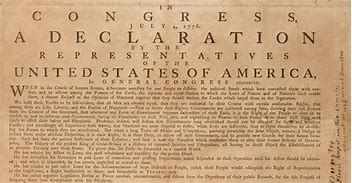
Why in news?
July 4 commemorates the 248th Independence Day of the United States, celebrating the signing of the Declaration of Independence, the foundational document that established the US as a union of states freed from British rule.
Why did the colonists want Independence from Britain?
- Lack of Representation:Colonists were discontented with British policies that imposed taxes and laws without colonial representation in the British Parliament, which they viewed as unjust and oppressive.
- Policy Shifts:After the French and Indian War, Britain ended its policy of salutary neglect and imposed stricter controls on the colonies, including prohibitions on westward expansion and new taxes through acts like the Stamp Act and Tea Act.
- Ideas of Freedom:Influenced by Enlightenment ideals of liberty and equality, colonists began to articulate grievances against monarchical rule and asserted their natural rights to self-governance.
- Resistance Movements:Events like the Boston Tea Party symbolized widespread resistance to British taxation and policies, galvanizing colonial unity and determination for independence.
- Armed Conflict:The escalation from protests and boycotts to armed conflict (beginning in 1775) underscored the colonies’ resolve to break away from British control and establish their own governance.
What happened in the lead up to American independence?
- Formation of Continental Congress:Colonists formed the Continental Congress to coordinate resistance efforts and explore avenues for negotiation with Britain, which ultimately failed due to British refusal to grant representation.
- Boycotts and Protests:Colonists attempted economic boycotts of British goods and engaged in protests against oppressive British policies, marking a period of growing dissent and opposition.
- Outbreak of War:By 1775, clashes between colonial militias and British troops erupted into open warfare, solidifying the shift from grievances to armed struggle for independence.
- Declaration of Independence:The Continental Congress formally declared the colonies’ independence on July 2, 1776, followed by the adoption and signing of the Declaration of Independence on July 4, 1776.
- Continental Army and Allies:The colonies secured military support and alliances, crucially from France, which helped sustain their war effort against British forces.
How was the Declaration of Independence formulated?
- Committee of Five:A committee including Thomas Jefferson, John Adams, Benjamin Franklin, Roger Sherman, and Robert R. Livingston was appointed to draft the Declaration of Independence.
- Thomas Jefferson’s Role:Jefferson, primarily responsible for drafting, drew on Enlightenment philosophy and his earlier writings to articulate the principles of natural rights and grievances against British tyranny.
- Drafting Process:The committee reviewed Jefferson’s draft, incorporating edits and revisions suggested by Adams, Franklin, and others before presenting the final version to the Continental Congress.
- Adoption and Signing:On July 4, 1776, the Continental Congress formally adopted the Declaration of Independence, which was signed by 56 delegates representing the thirteen colonies, solidifying their break from British rule.
Legacy of equality and rights as a foundation:
- The Declaration’s proclamation of equality and rights laid the foundation for American ideals of democracy and independence, shaping the course of American history and inspiring similar movements worldwide.
Conclusion:
The Declaration of Independence, adopted on July 4, 1776, marked a pivotal moment as the American colonies asserted their sovereignty, based on Enlightenment ideals, igniting a global pursuit of liberty and democratic principles.
GS3/Environment
Climate Resilient Agriculture
Source: The Indian Express
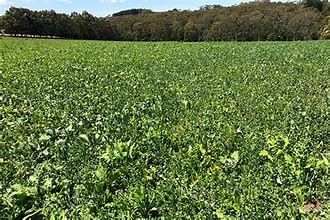
Why in News?
The Union government plans to unveil a framework to promote climate-resilient agriculture in 50,000 villages located in climatically-vulnerable districts.
About Climate Resilient Agriculture
Climate Resilient Agriculture (CRA) involves farming practices and strategies that can withstand and adapt to the changing climate. In India, where agriculture is a pivotal part of the economy and sustenance for millions, CRA is crucial for ensuring food security, economic stability, and sustainable development.
Key Components/Features of CRA:
- Diversified Cropping Systems
- Mixed Cropping
- Crop Rotation
- Improved Water Management
- Soil Health Enhancement
- Adoption of Stress-Tolerant Crop Varieties
- Agroforestry
- Weather and Climate Services
- Risk Management and Insurance
Benefits of CRA:
- Increased Productivity
- Enhanced Livelihoods
- Environmental Sustainability
- Food Security
Challenges & Solutions:
- Awareness and Education
- Access to Resources
- Policy Support
ICAR's Climate Smart Agriculture Program
The Indian Council of Agricultural Research (ICAR) is implementing the "Consortium for Scaling-Up Climate Smart Agriculture (CSA) in South Asia (C-SUCSeS)" research program. This initiative aims to increase agricultural production and productivity sustainably, improve food security, nutrition, and income in the SAARC region.
Efforts and Collaborations:
- Regional seed bank exploration
- Regional testing and certification of seeds
- Sharing plant genetic material and seeds
Climate-Resilient Agriculture in 50,000 Villages:
Officials will select villages from climatically-vulnerable districts for implementing climate-resilient agriculture. The initiative is part of a national program on climate-resilient agriculture to be launched by the Ministry of Agriculture and Farmers' Welfare as part of a 100-day agenda.
GS-I/Indian Society
Education Remains the Most Effective Contraceptive
Source: The Hindu

Why in news?
India’s current population of 1.4 billion is projected to peak at 1.7 billion by 2064, then stabilize at 1.53 billion by 2100, as fertility rates decline below replacement level.
What does the United Nations speak on Indian demographics?
- India overtook China as the world’s most populous country. UN estimates project India’s population to peak at 1.7 billion around 2064, then settle at 1.53 billion by 2100.
- Population growth is slowing, with the total fertility rate dipping below the replacement level of 2.1.
What do the National Family Health Surveys (NFHS) observed recently?
Association with Education:
- There is a significant correlation between levels of education and unmet needs for family planning among married women in India, highlighting the importance of education in addressing reproductive health issues.
High Demand for Family Planning:
- There remains a notable demand for family planning services, particularly among young women aged 15-24, indicating ongoing challenges in meeting reproductive health needs effectively across different age groups.
Challenges faced by a deprived section of society
- Limited Access to Family Planning Services:Women from disadvantaged backgrounds often face barriers in accessing contraceptives and family planning services due to social norms, lack of education, and cultural taboos surrounding contraception
- Teenage Pregnancies and Early Marriages:High rates of teenage pregnancies and early marriages contribute to health risks for young women, exacerbated by limited awareness about sexual and reproductive health rights and options.
- Social Stigma and Cultural Norms:Deep-rooted societal attitudes and stigmas surrounding sexual activity, contraception, and abortion hinder open discussions and access to comprehensive sexual education and healthcare services, particularly for unmarried individuals.
What can India do to improve social conditions?
- Enhancing Education and Awareness:Increase access to comprehensive sex education in schools and communities to empower young people with knowledge about contraception, family planning, and reproductive health rights.
- Addressing Cultural Norms and Stigma:Challenge societal taboos and misconceptions surrounding contraception and sexual activity through culturally sensitive communication and advocacy efforts.
- Expanding Healthcare Access:Ensure equitable access to affordable and quality healthcare services, including reproductive health services, particularly in rural and underserved areas.
- Reforming Legal Frameworks:Reform laws and policies related to reproductive rights and access to safe abortion services to ensure women have autonomy over their reproductive decisions and can access safe and legal abortion services without unnecessary restrictions.
Steps taken by the government related to health:
- Ayushman Bharat Pradhan Mantri Jan Arogya Yojana (AB PM-JAY): This scheme aims to provide health coverage to over 500 million people, offering a cover of Rs. 5 lakh per family per year for secondary and tertiary care hospitalization. Over 4.68 crore cards have been issued under the scheme.
- Comprehensive Primary Health Care (CPHC) through Ayushman Bharat-Health and Wellness Centres (HWCs): Launched in February 2018, this initiative aims to provide an expanded range of services closer to the community, including care for non-communicable diseases, palliative and rehabilitative care, oral, eye and ENT care, and mental health services.
- Pradhan Mantri Swasthya Suraksha Yojana (PMSSY):This scheme, launched in 2003, aims to correct regional imbalances in the availability of affordable/reliable tertiary healthcare services and also to augment facilities for quality medical education in the country. Under this, new AIIMS are being set up and existing medical colleges are being upgraded
Way forward:
- Integrated Approach to Education and Healthcare: Implement integrated programs that combine comprehensive sex education in schools with improved access to healthcare services, ensuring young people are empowered with knowledge and resources for reproductive health.
- Community Engagement and Advocacy:Foster community dialogues and advocacy campaigns to challenge cultural norms and stigma around reproductive health, promoting open discussions and awareness-building initiatives across all demographics.
Mains PYQ:
- Demographic Dividend in India will remain only theoretical unless our manpower becomes more educated, aware, skilled and creative.
What measures have been taken by the government to enhance the capacity of our population to be more productive and employable?
(UPSC IAS/2016)
|
39 videos|4551 docs|974 tests
|
FAQs on UPSC Daily Current Affairs - 5th July 2024 - Current Affairs & Hindu Analysis: Daily, Weekly & Monthly
| 1. What impact could a Labour election win have on the India-UK Free Trade Agreement? |  |
| 2. How much funds could flow into India if Indian Government Bonds are included in the JP Morgan index? |  |
| 3. What are the potential benefits of afforestation in Delhi Ridge? |  |
| 4. What are the key issues with assigning the 'mandir' tag to Ayushman Health and Wellness Centres? |  |
| 5. How is the Producer Price Index (PPI) different from the Wholesale Price Index (WPI)? |  |




























